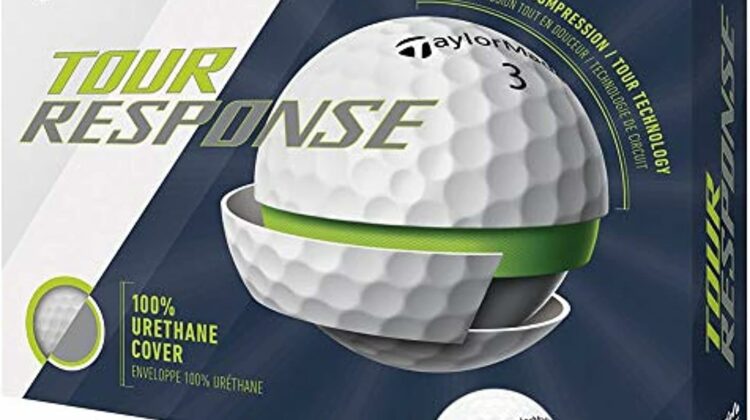
Welcome to the world of the lowest-compression golf balls.
Where magical white spheres are designed to give you swing the extra boost it needs while minimizing your dreaded slices and hooks.
Ok, well it might not be magical, but it will help.
A low-compression golf ball can be a secret weapon when it comes to controlling your golf ball and chasing those pesky pars.
How, you ask?
We’ll come back to this in a little bit.
First, let’s debunk a myth floating around about swing speed.
There is no correct golf ball based on our swing speed.
Any golfer with slow swing speeds or moderate swing speeds can benefit just as much from high-compression golf balls as the fastest swing-speed player out there.
The myth about swing speed and compression comes from the idea that if you don’t swing hard enough, you can’t compress a high-compression golf ball. And therefore you can’t hit it as far.
False.
Anyone can compress any golf ball. I promise.
The potential advantage of low compression balls has more to do with spin rates than compressing power.
Will it feel better to hit a soft, low compression golf ball? Absolutely.
But that doesn’t mean it will go farther.
On that note, let’s take a deeper dive into the realm of lowest compression golf balls.
What is Golf Ball Compression
The concept of golf ball compression is simple.
It measures how much force is needed to deform a golf ball.
The lower a ball’s compression, the softer it is.
And everyone likes a softer golf ball.
This is as good a time as any to note that all companies measure compression slightly differently from one another.
While compression ratings might be similar, there is not an industry standard nor a common tool they all use.
Along those same lines, most balls worth playing have a multi-layer construction.
A Pro V1 has 3, Chrome Soft has 4, and a TP5 has 5.
I think you are starting to get the idea here.
All of these different layers have their own compression and companies will market their balls differently in an attempt to spotlight certain features like a softer core without completely disclosing the compression of the ball as a whole.
If it’s all starting to get a little confusing that’s because it is confusing.
Golf ball design is remarkably complicated.
Start looking up how many patents golf ball companies have and you might be more convinced of them trying to send a man into orbit rather than sending a ball into an open field of grass.
Jokes aside, the lowest compression golf balls are taking up a larger and larger space in the golf world.
And for good reason.
Trends have shown us that the lower the compression a ball is, the less it will spin.
How these companies arrive at this is a delicate balance, though.
Every push and pull in golf ball design is a give and take with performance.
We will dig deeper into this idea as we go, but for now, we will focus on the biggest two features most people want in a golf ball.
Distance and control.
Do Low Compression Golf Balls Go Farther
We all want to know what it feels like to go full “Hulk smash” on a golf ball.
And while some can accomplish this feat on their own merits, some of us need the assistance of our golf ball to help us get there.
How do the lowest compression golf balls do this?
Well, you may have heard that soft golf balls are slow golf balls.
I won’t argue that fact.
But I think speed tends to be a little bit overrated when it comes to the golf ball.
Not to mention, ball speed is not the only factor in how long your golf ball goes.
Spin plays a far bigger role than people think.
While I agree that speed matters, most of your ball speed actually comes from your swing speed rather than golf ball characteristics.
If you do a control test using average swing speed, the resulting ball speed from the fastest and slowest ball is only about 3%.
That’s not a lot.
Compare that same swing speed while measuring spin rates and you get a difference of nearly 30%.
That’s 10x more variability!
Relating this to distance, a ball that can spin less and fly higher will fly farther.
Even if it has a slightly lower initial ball speed.
I’m not saying every low compression ball fits this perfect combination, but the ones that do can be deadly.
For example, put an AVX in the right hands and you just watch how far that thing can fly.
And did I mention how straight it goes?
Are Low-Compression Golf Balls More Forgiving
Similar to distance, control requires you to land your shots where you are aiming.
Get a little bit off in your swing and it’s hard to have fun while your ball soars 30 yards offline.
But fear not, when you are playing with the lowest compression golf balls, you don’t have this problem.
Your balls are not spinning as much.
This means your shots aren’t going 30 yards offline anymore.
They’re starting where you want them to and staying on their directed flight path.
What is the Disadvantage of Low Compression Golf Balls
Like I said, golf ball design is all about give and take.
For all the control you get with low compression balls, you’ve got to give something back.
Unfortunately, the giving part also comes at the hand of less spin.
As with everything else in life, what’s good for some of us is bad for others.
Some of us benefit greatly when our ball spins less, Others want more spin.
Nay. Some of us need spin.
For a lot of muni-level golfers, we need help keeping the ball in the air.
How do we do that?
Usually with more spin.
Yes, this could come at the cost of a few more errant shots, but here we are back at the give-and-take part of golf balls again.
Unfortunately, we amateurs are also not very good at one other part of golf.
Short game.
What can help us hold greens on short game shots?
You guessed it. More spin.
All that to say, before you jump into the world of lowest-compression golf balls thinking you’ve just unlocked the holy grail of golf, be mindful that everything comes at a price.
Who Should Use Low-Compression Golf Balls
There are two types of players that benefit most from low compression golf balls.
The first are those who struggle with big left or right misses.
I don’t think it’s any secret that we’ve all struggled with wayward misses at one time or another.
At the worst of times, it can feel like stepping onto a tee box with a blindfold on hoping you are looking at the fairway.
It’s not fun.
Only made worse when you remember you paid for the pain and suffering.
That is to say, we can all benefit from a low compression golf ball depending on the current shape of our game.
And beginners specifically can benefit as they are still trying to master their swing and all the subtleties of it.
The second group of golfers that benefits from low compression golf balls are the ones who naturally spin the ball so much that any other golf ball gives them too much spin and they need to minimize it.
Definitely a unicorn of a golf ball category, but they’re out there.
Whichever category you fall into, there is a low compression golf ball option for you.
(Don’t know which category you fall into? Test them out!)
What Low-Compression Golf Ball Should I Play?
We’ve reached the fun part.
Where you get to test out what golf ball fits your game the best.
Before we get there, you’ve probably heard it before.
“Low compression golf balls work best with slower swing speeds.”
I’ve said it before and I’ll say it again, it’s just not true.
Whether you have a slow swing speed or a fast swing speed, it doesn’t matter.
If someone tells you these balls are only for slow-swing speed golfers, you should run the other way.
Compression has a lot more to do with spin than how hard you can swing.
On that note, let’s look at the low-compression golf balls list.
Best Low-Compression Golf Balls For High Handicappers and Beginners
If you fall into this category (see our full list of beginner golf balls), I’m going to assume your golf game falls into the “need to hit it straighter” category.
You probably lose more balls than you’d like and that means price also plays a factor in your golf ball decision tree.
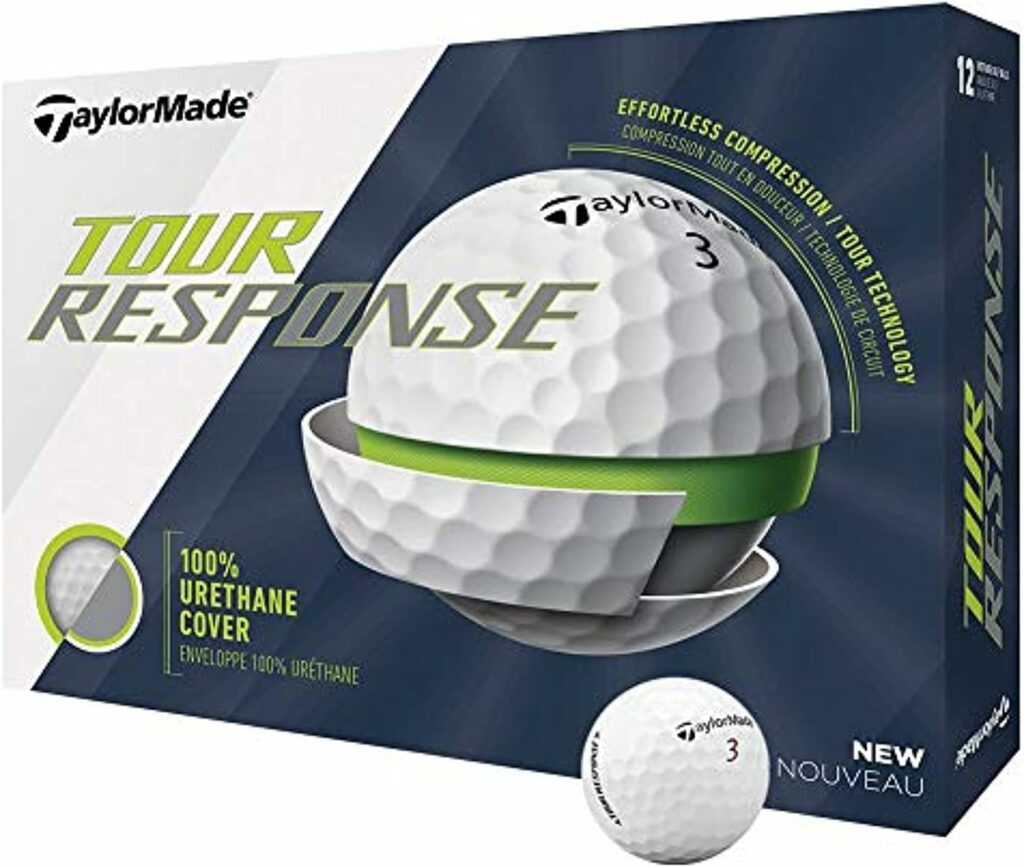
Taylormade Tour Response
The Tour Response is not supposed to be a “premium” golf ball, but I think someone forgot to tell the golf balls.
It comes with the same soft urethane cover that all the tour-level golf balls do so you don’t lose any performance benefits there.
The difference between the Tour Response and other Taylormade options strictly comes from the lower spin characteristics.
Especially on short game shots.
Rather than comparing it to Taylormade’s premium models, I think the more fair comparison is to the Titleist Tour Speed.
The Tour Response has a much lower compression and will give you that nice butter-soft feel we all love, but most of the playing characteristics are similar.
All in all, it gives a good amount of forgiveness that most high handicappers need.
Combine that with its price point, and it is definitely one of the best low-compression golf balls.
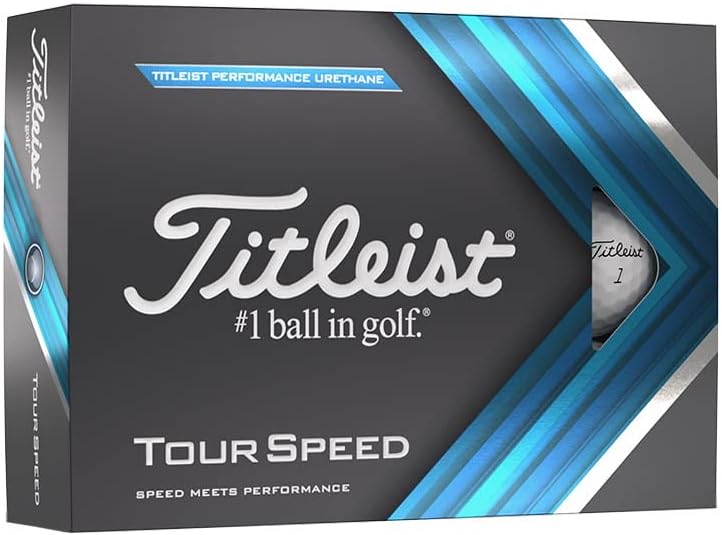
Titleist Tour Speed
It might be a bit of a stretch to put the Tour Speed in the low compression category, but I don’t care.
It’s the firmest of the options on this list, but its playing characteristics are right in line with the rest.
Of its competitors, the Tour Speed gives the best balance of low spin and high ball speed.
I know I’ve said that ball speed can be overrated in golf balls, but it’s always nice when it’s there.
This balance means it won’t have the lowest spin rates in this category which leads to a little more potential for wayward shots.
But not by much.
At the end of the day, if you’re playing a ball with a Titleist script plastered on it, you know you’re in good hands.
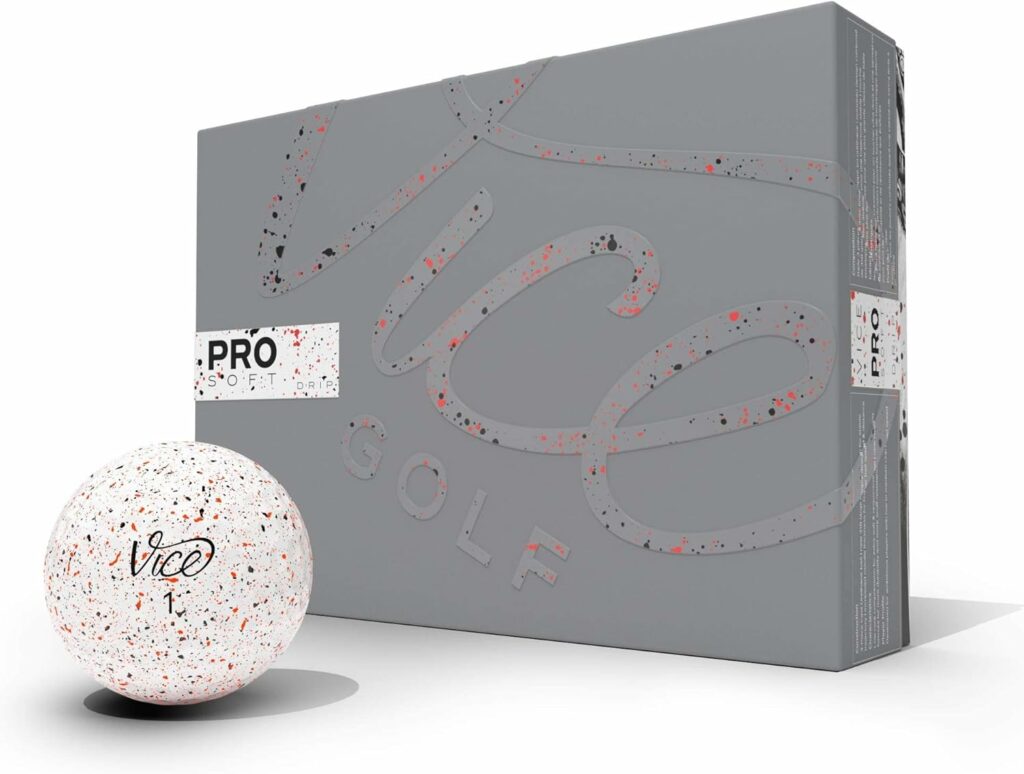
Vice Pro Soft
If you haven’t tried a Vice golf ball, you don’t know what you’re missing.
Built out of a need for accessible golf products, I think it’s safe to say they’re accomplishing their goal.
The Vice Pro Soft might be light on your wallet, but not on performance.
It has noticeably less spin than the average ball to help tighten your dispersion pattern and keep more balls in the fairway.
You might notice that it spins a fraction more off the driver than the Taylormade Tour Response, but the difference is so small you may only see it if you have extremely fast swing speeds.
The decision to try a Pro Soft is a pretty simple one in my book.
How much golf ball do you want to pay for?
We’re not tour pros getting balls for free, so budget plays a factor for all of us at one point or another.
If you’re a high handicapper or beginner, I’m willing to guess that you’ve had those rounds of losing quite a few balls.
Vice can help with that.
At almost half the price of some of the premium golf balls, the Pro Soft seems worth a try, doesn’t it?
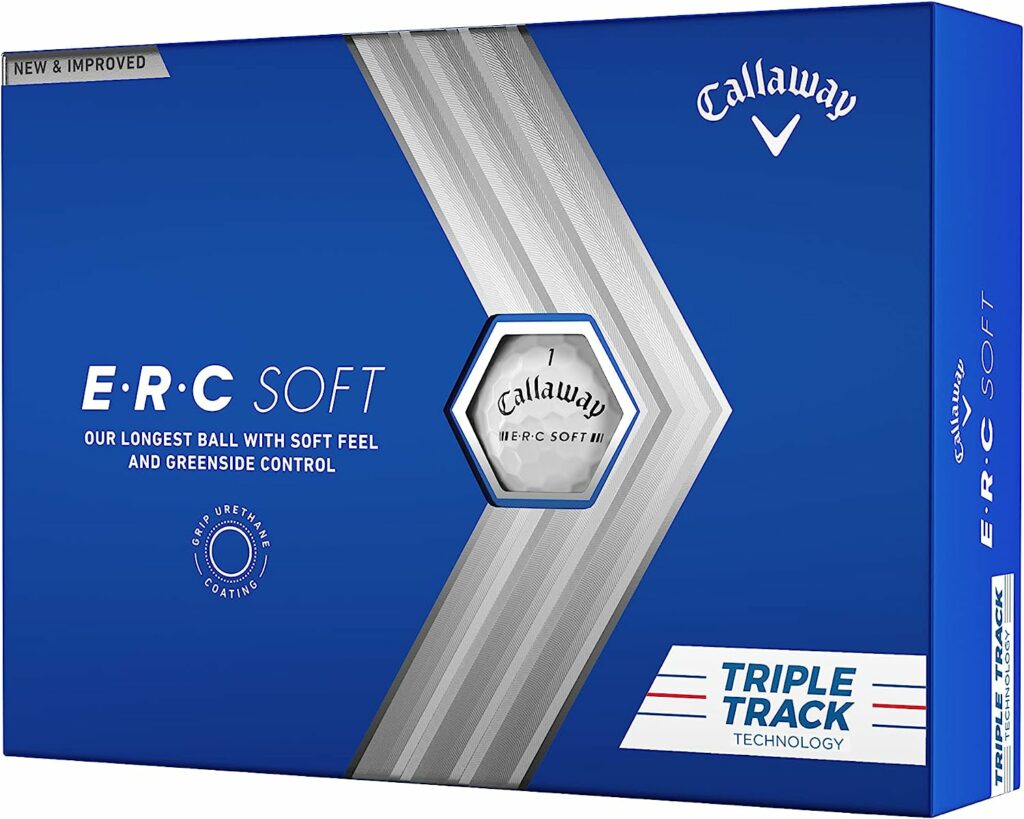
Callaway ERC Soft
Maybe the most curious ball on this list.
Callaway made a complete overhaul on the most recent edition of the ERC Soft.
Changing the foundation of both the core and cover allows it to be both faster and higher spinning than previous versions.
If you are a lover of prior ERC models, the added spin might not be your cup of tea.
However, I will listen anytime someone tells me there is more speed out there.
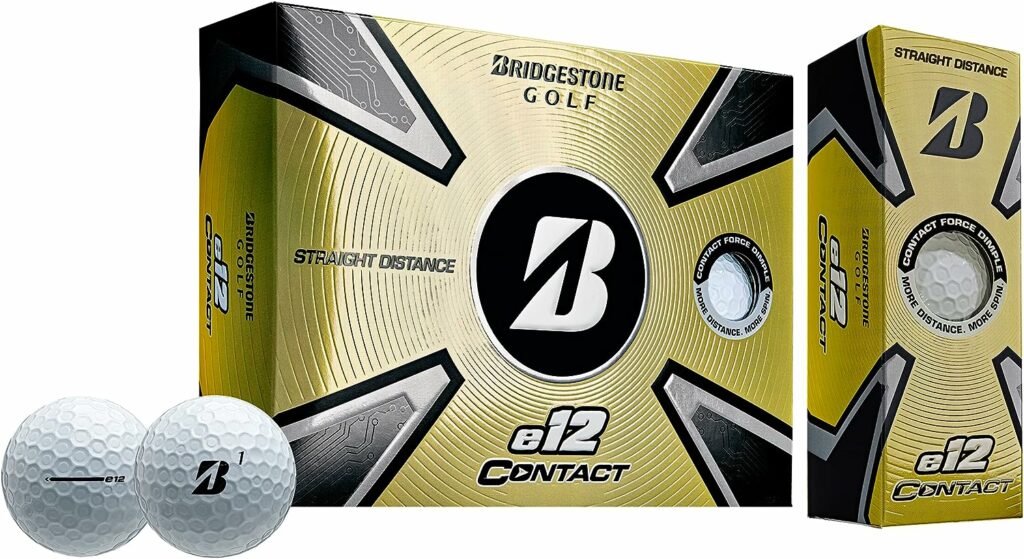
Bridgestone e12
Last but certainly not least, the e12 is unique because of who makes it.
Bridgestone takes everyone else’s dimple design and throws it in the trash.
I’m not an aerospace engineer, so I have to believe them when they tell me their dimple design creates a more efficient energy transfer.
While I may not be an engineering whiz kid, I do understand soft feel and forgiveness.
And the e12 has just that.
Best Low Compression Golf Balls for Low Handicappers
If you fall into this category, I’m going to assume you don’t need a low compression golf ball to help keep your golf ball in play.
You already do that on your own.
Though, these balls will still give you more of a leg up anyway.
The thing you probably struggle with is too much short game spin or ball flights that balloon on you far too often.
Both of which can be equally frustrating while trying to go low.
Here are the best low compression golf balls for low handicappers.
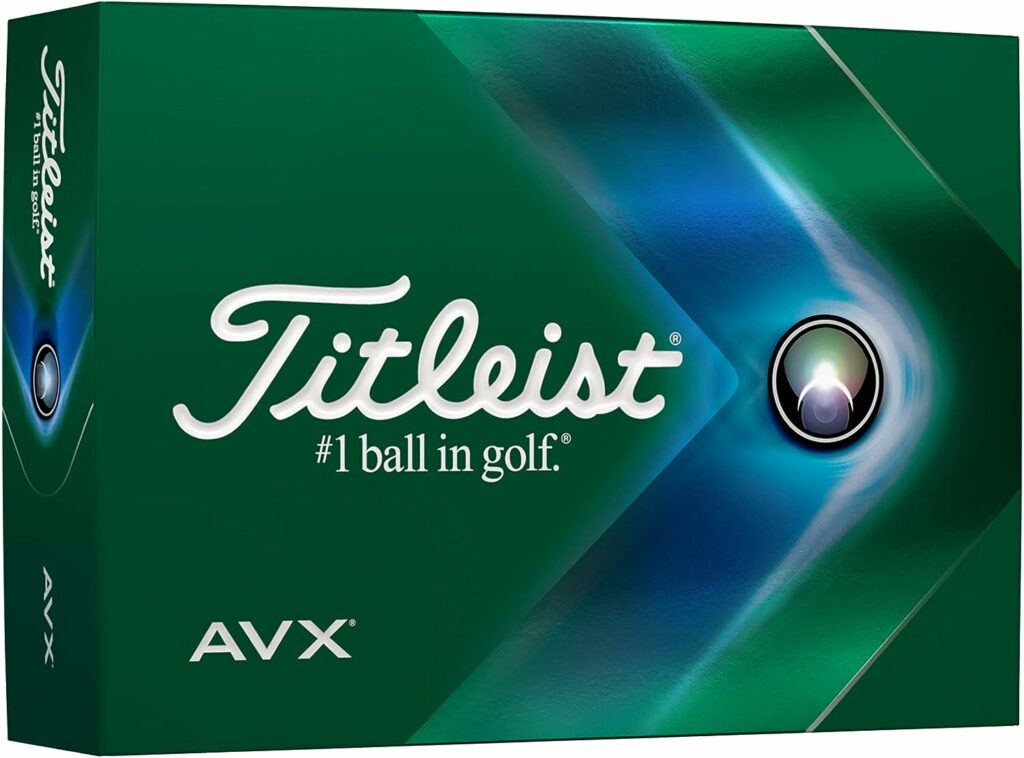
Titleist AVX
If you’re playing a golf ball made by Titleist you can trust that you’re in good hands.
The AVX is no different.
Though it may not get as much notoriety as its siblings in the Pro V1 or Pro V1x family, there is no less attention paid to the AVX.
Knowing that it comes with much softer and lower spinning features, it has its own dimple pattern to help give it that little extra carry.
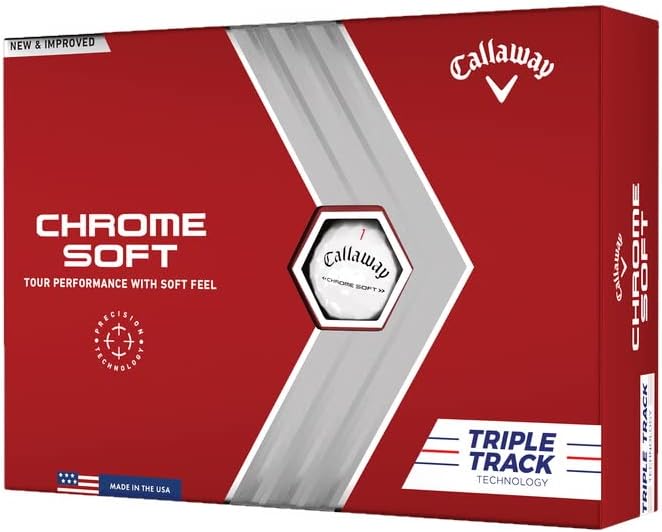
Callaway Chrome Soft
There is really not a winner between the AVX and Callaway Chrome Soft.
Both balls perform as fascinating unicorns of what current technology makes possible with low-compression balls.
Callaway all but created the market for low-compression golf balls when they released the Chrome Soft and now everyone tries to match with their own low compression balls.
Those familiar with the story may remember Callaway’s notorious blunder of off-center cores in some of their golf balls.
However, they have very openly accepted their faults and invested heavily in correcting their product.
And those issues seem to be behind them.
If you have a Chrome Soft in your bag, you know you’re getting a good ball.
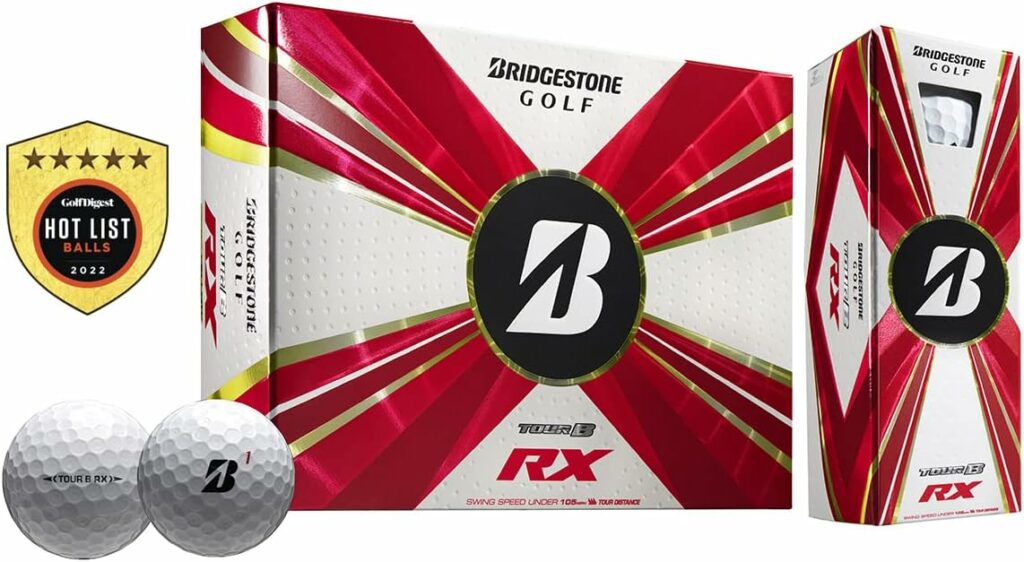
Bridgestone Tour B RX
The little brother of Bridgestone’s Tour B X, the B RX still packs a punch.
It will not be quite as long off the driver as the AVX or Chrome Soft, but it will spin a little bit more if you are one of those who needs help with higher ball flight.
Mid-iron spin will be harder to come by for the B RX, but wedge spin puts it back in the realm of the other balls on this list.
I would put this in a class right behind the AVX and Chrome Soft, but I will raise my hand and tell you this is usually the ball I go to when I start spraying shots left and right.
Best Low Compression Golf Balls on a Budget
Love golf, but don’t want to pay for something that could end up at the bottom of a lake?
These are the best balls when you’re ballin’ on a budget.

Vice Tour
Sort of in a class of its own.
The Vice Tour can compete with many of the higher priced balls on this list and, just like every other Vice ball, is a fraction of the price.
That doesn’t even mention the playability it has.
Driver spin will play lower than a Titleist Tour Speed which should lead to many more fairways.
It won’t have as much bite on short game shots as you’d probably like, but you’ve got to give something to get something.
In this case, you are giving up greenside spin in an effort to hit more fairways.
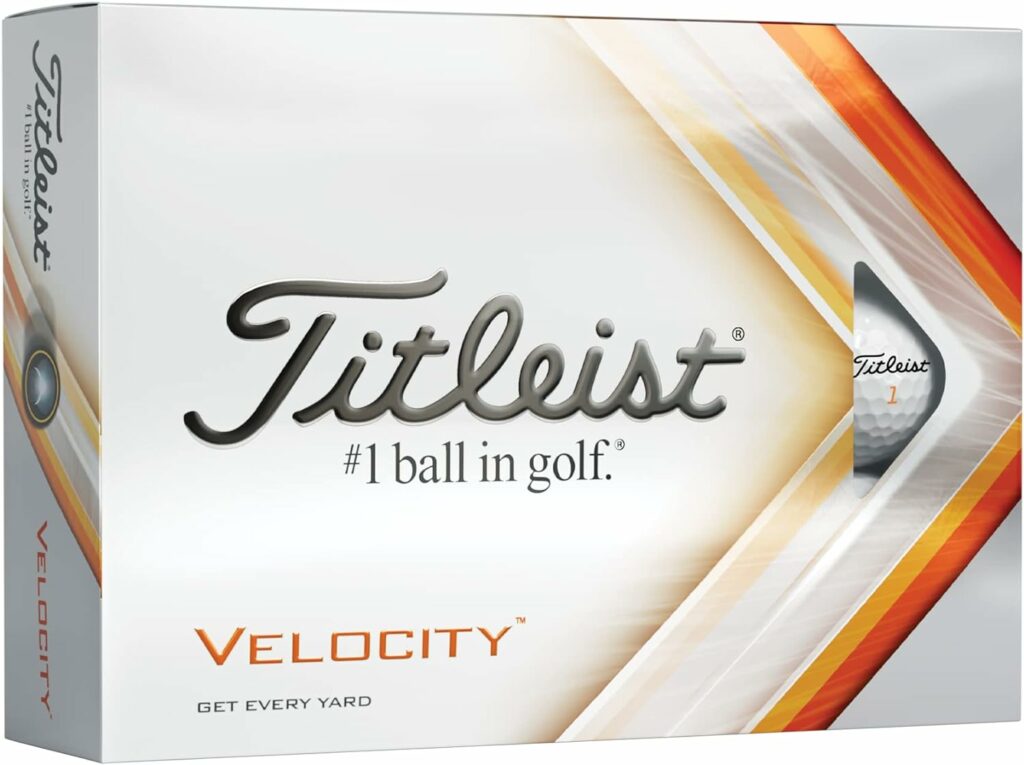
Titleist Velocity
The Velocity has a unique combination of low spin and soft feel which should help give you a little extra carry with longer clubs.
It is by no means trying to be the best ball on the market, but it’s still a Titleist and that means something when you’re out of the course.
LIke most other balls on this list though, it leaves some to be desired on short game spin.
That shouldn’t take away from it providing everything you need to go out on the course and enjoy a round.
Put a Velocity in play and you’ll spend more time in the fairway than the woods.
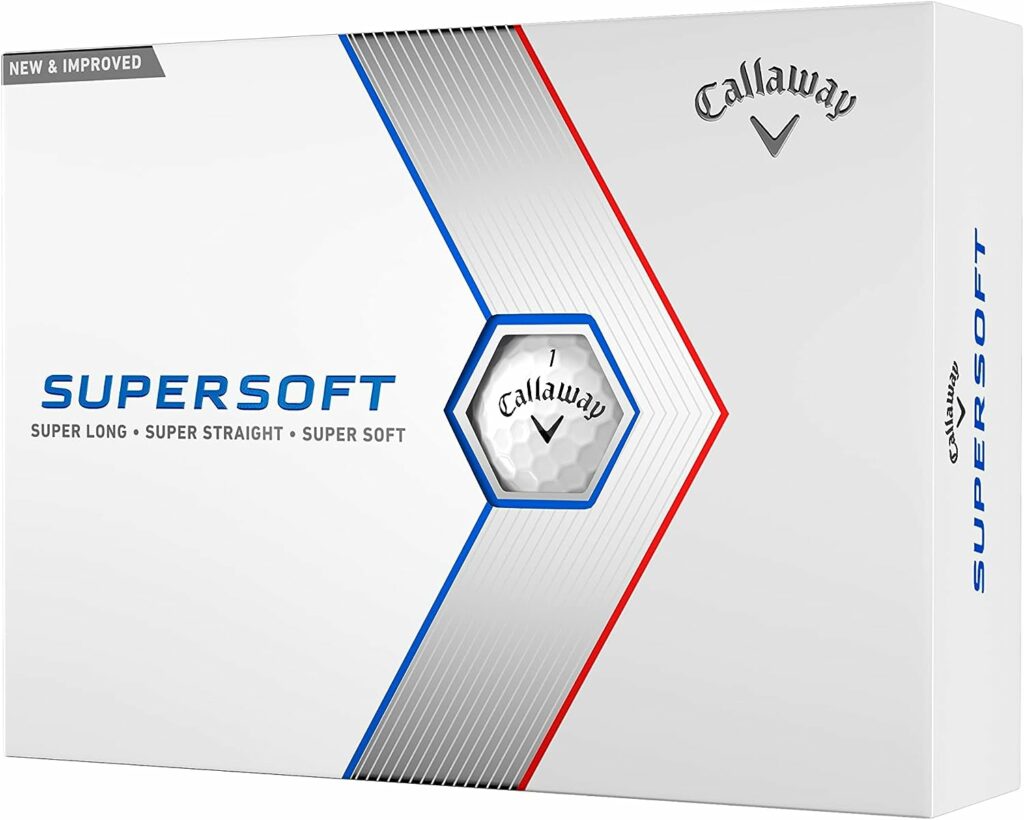
Callaway Supersoft
The name says it all.
It’s in the conversation for lowest compression golf ball on the market.
That helps the Supersoft be one of, if not the lowest spinning golf balls no matter how fast you swing.
This undoubtedly will help you keep more balls in the fairway when you start spraying balls left and right.
But that is not the only good thing about the Supersoft.
For what it lacks in short game spin it more than makes up for with a higher trajectory.
It’s no secret that more spin can help stop a ball, but if there is no spin the only last-ditch effort is hoping that it flies as high as possible to land as soft as possible.
The Supersoft accomplishes this as well as any ball out there.
Lowest Compression Golf Balls: Final Thoughts
I’ll mention it one last time, the world of lowest compression golf balls is not for everybody.
These balls are good at specific things and help very specific types of players.
That said, everyone who plays low compression golf balls does so for different reasons.
And whatever your reason is, trust it and go with it.
After all, there is no better feeling than a soft golf ball.
But a softer feel should not be the driving force in choosing a golf ball.
If you’re going to play lower compression golf balls, test them out and make sure it’s because you need a ball that spins less and holds its trajectory.
Curious how these golf balls compare to the rest?




Leave a Reply